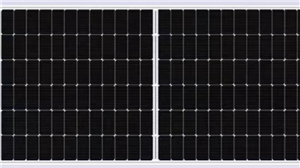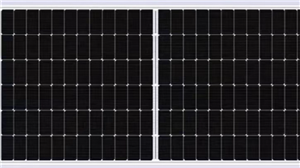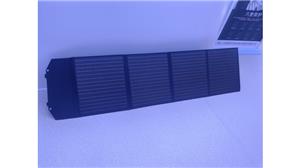Green smart house space capsule
1. Core design philosophy
Green and environmentally friendly orientation
Energy self-sufficiency: Widely adopt renewable energy sources such as solar panels and small wind power generation equipment, paired with energy storage systems to achieve power self-sufficiency and reduce dependence on traditional power grids.
Resource recycling: Equipped with a built-in rainwater collection and reclaimed water purification system, it achieves the recycling and utilization of water resources. Some designs incorporate green plant walls and small ecological recycling devices, enhancing indoor air quality and reducing carbon emissions.
Low-carbon materials: The main structure predominantly utilizes lightweight and environmentally friendly materials (such as high-strength composite materials, recycled steel) to reduce energy consumption and pollution during the construction process.
Intelligent integration experience
Smart Home: By connecting devices such as lighting, temperature control, security systems, and home appliances through the Internet of Things (IoT), users can remotely control these devices using voice commands or a mobile app, enabling automatic adjustments based on specific scenarios (such as adjusting lighting according to human presence detection and optimizing air conditioning modes based on outdoor temperature and humidity).
Environmental self-adaptation: Equipped with sensors to monitor indoor formaldehyde, PM2.5, temperature, humidity, and other data in real time, it integrates with the ventilation system and air purifier to automatically optimize the environment and enhance living comfort.
Energy-saving management: Intelligent algorithms analyze energy consumption habits, optimize equipment operation strategies, and reduce unnecessary energy waste (such as automatically reducing energy consumption during non-use periods).
Modularity and flexibility
Structural modularization: The main structure is assembled using prefabricated components, which shortens the construction period and facilitates transportation and relocation, making it suitable for temporary accommodation, field work, or post-disaster resettlement.
Space expandability: A single cabin can serve as an independent living unit (including basic functions such as a bedroom, kitchen, and bathroom), and multiple cabin combinations can be expanded to provide larger spaces, meeting the needs of families or collective use.
II. Application Scenario
Outdoor residency: Serving as a high-end accommodation unit in camping sites and scenic areas, it provides a comfortable experience in an "off-grid" state, suitable for nature lovers or short-distance vacations.
Emergency resettlement: After natural disasters (such as earthquakes and floods), it can be quickly deployed as temporary housing, providing both safety and basic living security.
Scientific research/operation base: Provides long-term residential support for scientific research teams and engineering personnel in remote areas (such as deserts, plateaus, and polar regions), relying on self-sufficient energy to maintain operations.
Urban micro-space utilization: In high-density urban areas, it can be utilized as small-sized residences, studios, or shared spaces, optimizing the utilization of land resources.
III. Advantages and Challenges
Advantages: low energy consumption, high environmental friendliness; flexible construction, strong adaptability; intelligent and convenient, enhancing living experience.
Challenges: High initial construction costs; energy stability under extreme weather conditions needs further optimization; some areas may be subject to policy or land planning restrictions.
The green smart housing space capsule represents a trend in future living - by combining technology and nature, it achieves an "efficient, environmentally friendly, and flexible" lifestyle. Especially in the context of the increasing popularity of sustainable development concepts, its application scenarios are expected to further expand.
Green and environmentally friendly orientation
Energy self-sufficiency: Widely adopt renewable energy sources such as solar panels and small wind power generation equipment, paired with energy storage systems to achieve power self-sufficiency and reduce dependence on traditional power grids.
Resource recycling: Equipped with a built-in rainwater collection and reclaimed water purification system, it achieves the recycling and utilization of water resources. Some designs incorporate green plant walls and small ecological recycling devices, enhancing indoor air quality and reducing carbon emissions.
Low-carbon materials: The main structure predominantly utilizes lightweight and environmentally friendly materials (such as high-strength composite materials, recycled steel) to reduce energy consumption and pollution during the construction process.
Intelligent integration experience
Smart Home: By connecting devices such as lighting, temperature control, security systems, and home appliances through the Internet of Things (IoT), users can remotely control these devices using voice commands or a mobile app, enabling automatic adjustments based on specific scenarios (such as adjusting lighting according to human presence detection and optimizing air conditioning modes based on outdoor temperature and humidity).
Environmental self-adaptation: Equipped with sensors to monitor indoor formaldehyde, PM2.5, temperature, humidity, and other data in real time, it integrates with the ventilation system and air purifier to automatically optimize the environment and enhance living comfort.
Energy-saving management: Intelligent algorithms analyze energy consumption habits, optimize equipment operation strategies, and reduce unnecessary energy waste (such as automatically reducing energy consumption during non-use periods).
Modularity and flexibility
Structural modularization: The main structure is assembled using prefabricated components, which shortens the construction period and facilitates transportation and relocation, making it suitable for temporary accommodation, field work, or post-disaster resettlement.
Space expandability: A single cabin can serve as an independent living unit (including basic functions such as a bedroom, kitchen, and bathroom), and multiple cabin combinations can be expanded to provide larger spaces, meeting the needs of families or collective use.
II. Application Scenario
Outdoor residency: Serving as a high-end accommodation unit in camping sites and scenic areas, it provides a comfortable experience in an "off-grid" state, suitable for nature lovers or short-distance vacations.
Emergency resettlement: After natural disasters (such as earthquakes and floods), it can be quickly deployed as temporary housing, providing both safety and basic living security.
Scientific research/operation base: Provides long-term residential support for scientific research teams and engineering personnel in remote areas (such as deserts, plateaus, and polar regions), relying on self-sufficient energy to maintain operations.
Urban micro-space utilization: In high-density urban areas, it can be utilized as small-sized residences, studios, or shared spaces, optimizing the utilization of land resources.
III. Advantages and Challenges
Advantages: low energy consumption, high environmental friendliness; flexible construction, strong adaptability; intelligent and convenient, enhancing living experience.
Challenges: High initial construction costs; energy stability under extreme weather conditions needs further optimization; some areas may be subject to policy or land planning restrictions.
The green smart housing space capsule represents a trend in future living - by combining technology and nature, it achieves an "efficient, environmentally friendly, and flexible" lifestyle. Especially in the context of the increasing popularity of sustainable development concepts, its application scenarios are expected to further expand.




